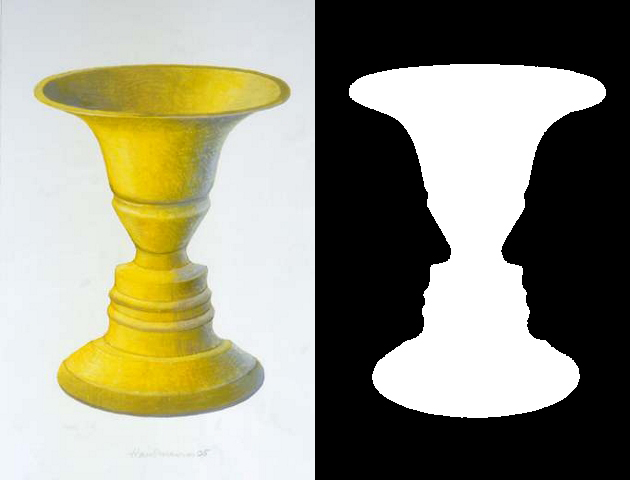I’m the slowest at making style choices. It once took me six months to pick a color to paint my room. Spoiler alert: l chose light purple. So it’s not surprising that picking out new glasses at the optical store a few years ago resulted in me standing at the counter, totally paralyzed. I had narrowed it down to about eight different pairs and could not get any further. For some I liked the color, others the shape, others the feel, others the price. I couldn’t wrap my brain around how to decide when there were so many factors involved. And the lovely store clerk recognized my fugue state and generously helped me by simplifying the decision in front of me. She had me try on glasses 1 and then glasses 2. Then she had me pick which one of the two I liked better and eliminated the other one. After a few minutes working through her spontaneous glasses tournament bracket, I had found my favorite pair, got the glasses and moved on with my life.
The optician’s solution was a great example of the utility of black and white thinking. Black and white thinking is seeing things in simple binary terms: good and evil, man and woman, day and night, good glasses and rejected glasses. It is efficient. It keeps things simple and clear.
However, black and white thinking can get us into a lot of trouble. Most of the world is more complex than picking out a pair of glasses. Each person contains multitudes. So when we slip into black and white thinking about ourselves, our team mates, or controversial topics, we are in danger of oversimplifying, throwing out the good with the bad, and causing harm. If we don’t get the job offer, say the wrong thing at family dinner, or forget that item we needed from the store, black and white thinking can trick us into believing we are bad people, not just regular old human people who make mistakes. Wedge Issues like abortion and gun control have lots of grey areas and nuance to work out, but black and white thinking can cause us to cling to one side, unable to hear anything from an opposing viewpoint. Most dangerous of all, black and white thinking can lead to dehumanization, a treacherous path. Because if some people are good people and others are bad people, then bad people deserve to be treated differently than the rest of us.
But there’s no such thing as purely bad people (or purely good ones either.) People in prison have families who love them. Heroic leaders of our past have behaved atrociously at home. I think Mister Rogers put it best
“Sometimes people are good
and they do just what they should.
But the very same people who are good sometimes
Are the very same people who are bad sometimes.
It’s funny but it’s true.
It’s the same isn’t it for me and you.”
“Sometimes People Are Good”
I see my kids drawn to cartoons and comic books with heroes and villains full of easily digestible black and white thinking. It’s totally appropriate for the elementary aged set. But in real life they also get to experience everyone in the family’s complexity. We are all mean AND nice. We all come together to love each other and desperately need space from each other. I was brainstorming about this topic with my kids and asked my older son, Sebastian, who is now 9, “Why do people start having black and white thinking and how can we get them to…” He cut me off right there, “Have Rainbow Thinking?”
I gasped and dropped my jaw. I’d never heard of that term, “Rainbow Thinking.” But I loved it right away. Sebastian proposed an alternative to black and white thinking that incorporates more details and nuance and all the different colors in the crayon box. The formal term for it is Integrative Complexity and it’s a person’s ability to comprehend multiple perspectives simultaneously. This kind of thinking requires two things:
–The capacity and willingness to accept that there is more than one way to look at an issue and to acknowledge that these differing perspectives are all legitimate (differentiation), and
–The ability to form conceptual links among these perspectives and to integrate them into a coherent overall judgment (integration).
(Notice this definition says the differing perspectives are legitimate, not correct or true.)
A quick challenge to explore this kind of thinking that comes from a recent episode of the NPR program Hidden Brain is to look at the classic optical illusion Rubin’s vase. Sometimes you see a vase there. Sometimes you see two faces facing each other. And, with effort, you might be able to see both at once. Can you do it?
So how can we strengthen our Rainbow Thinking? By reading novels which allow us to really go deep into another person’s perspective. By traveling to other places and getting to know the locals and experiencing a different way of life. And, of course, (you saw this coming by now) one of the funnest and easiest ways to develop Rainbow Thinking is through improvisational theater activities.
For example, the improv game of Props. Players are given random objects and take turns interacting with that object as anything besides what it actually is. For example, when a player is given a pencil, they might put the eraser on their nose and rotate it around their face going tick-tock –it’s no longer a pencil but the hand of a clock with their face as the face! The next player might twirl it around in their hands saying “Abra Cadabra!” and suddenly it’s a magic wand. And the next player might stand it on the ground as the mast of a squirrel’s sailboat saying, “Ahoy!” in a tiny voice. The idea is to see it from as many different perspectives and possibilities as you can with speed and joy. Here’s an excellent example featuring the cast of TV’s Whose Line Is It Anyways with the late great Robin Williams sitting in.
There are so many improv activities like this that help us stretch our minds to keep thinking of the same things in a new way. It’s ironic, but playing in this way can actually give you a more mature perspective. When we are born, we only see in black and white. We start to develop color vision around 4 months, which also happens to be when we start smiling, babbling, emoting and playing. So if we can play around with ideas, concepts, people, we can start to have a more sophisticated understanding of the world. And the world becomes a much more colorful place. That’s one of the best benefits from Rainbow Thinking.



